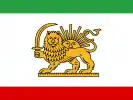Archduke Ferdinand Karl of Austria
Archduke Ferdinand Karl of Austria, later known as Ferdinand Burg (Ferdinand Carl Ludwig Joseph Johann Maria; Vienna, 27 December 1868 – Munich, 12 March 1915)
| Ferdinand Burg | |
|---|---|
 | |
| Born | 27 December 1868 Vienna |
| Died | 12 March 1915 (aged 46) Munich |
| Spouse | Bertha Czuber |
| Father | Archduke Karl Ludwig of Austria |
| Mother | Princess Maria Annunciata of Bourbon-Two Sicilies |
He was the third son of Archduke Charles Louis of Austria and Princess Maria Annunciata of Bourbon-Two Sicilies. Archduke Franz Ferdinand, whose assassination at Sarajevo on 28 June 1914 launched World War I, was his elder brother.
He was a major-general in the Austrian Army.

Like his brother, in 1909 he concluded an unequal marriage with Bertha Czuber (1879–1979), daughter of Emanuel Czuber. Unlike his brother, he did so without the emperor's knowledge or consent, having eloped two years before the marriage was revealed publicly.
On 6 August 1911 he renounced his rights and titles as a dynast of the House of Habsburg and assumed the name of "Ferdinand Burg",[1] at the demand of Emperor Franz Joseph. Henceforth he absented himself from the Viennese court and lived in Tyrol.
Death
By then Ferdinand Karl was suffering from tuberculosis, of which he died in 1915. He and his wife had no children. A funeral was set for him about four months after his death.
Honours
- Austrian decorations[2]
- Order of the Golden Fleece, Knight, 1884[3]
- Military Merit Cross
- Military Merit Medal on red ribbon
- Long Service Cross for Officers, 2nd Class
- Bronze Jubilee Medal for the Armed Forces
- Foreign decorations[2]
.svg.png.webp) German Empire: Order of the Black Eagle, Knight, November 1901; during a visit to Germany[4]
German Empire: Order of the Black Eagle, Knight, November 1901; during a visit to Germany[4]
.svg.png.webp) Bavaria: Order of St. Hubert, Knight
Bavaria: Order of St. Hubert, Knight.svg.png.webp) Saxe-Weimar-Eisenach: Order of the White Falcon, Grand Cross
Saxe-Weimar-Eisenach: Order of the White Falcon, Grand Cross.svg.png.webp) Saxony: Order of the Rue Crown, Knight
Saxony: Order of the Rue Crown, Knight Württemberg: Order of the Württemberg Crown, Grand Cross
Württemberg: Order of the Württemberg Crown, Grand Cross
.svg.png.webp) Empire of Japan: Order of the Chrysanthemum, Grand Cordon, 28 January 1901[5]
Empire of Japan: Order of the Chrysanthemum, Grand Cordon, 28 January 1901[5].svg.png.webp) Sovereign Military Order of Malta: Bailiff Grand Cross of Honour and Devotion (with Distinction for Jerusalem)
Sovereign Military Order of Malta: Bailiff Grand Cross of Honour and Devotion (with Distinction for Jerusalem) Qajar dynasty: Portrait of the Shah of Persia with Diamonds
Qajar dynasty: Portrait of the Shah of Persia with Diamonds Russian Empire:
Russian Empire:
- Order of St. Andrew the Apostle the First-called, Knight
- Order of St. Alexander Nevsky, Knight
- Order of St. Anna, Knight 1st Class
- Order of St. Stanislaus, Knight 1st Class
- Imperial Order of the White Eagle, Knight
.svg.png.webp) Kingdom of Serbia: Royal Order of the White Eagle, Grand Cross
Kingdom of Serbia: Royal Order of the White Eagle, Grand Cross.svg.png.webp) Spain: Order of Charles III, Grand Cross with Collar
Spain: Order of Charles III, Grand Cross with Collar.svg.png.webp) Tuscan Grand Ducal Family: Order of Saint Joseph, Grand Cross
Tuscan Grand Ducal Family: Order of Saint Joseph, Grand Cross
References
- C.E.D.R.E., *L'Empire d'Autriche*, Volume II, 1991, p. 197 (French)
- Hof- und Staatshandbuch der Österreichisch-Ungarischen Monarchie (1911), Genealogy p. 3
- "Toison Autrichienne (Austrian Fleece) - 19th century" (in French), Chevaliers de la Toison D'or. Retrieved 2018-12-11.
- "Latest intelligence - The German Emperor". The Times (36621). London. 25 November 1901. p. 6.
- 刑部芳則 (2017). 明治時代の勲章外交儀礼 (PDF) (in Japanese). 明治聖徳記念学会紀要. p. 150.